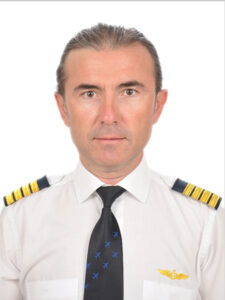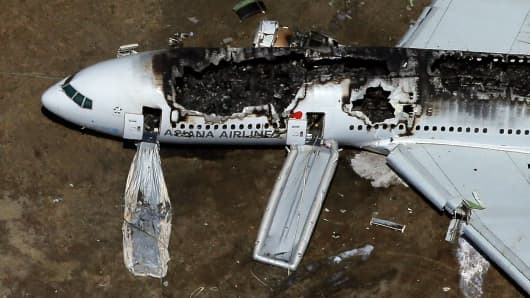The take-off and landing phases are called critical phases. On the take-off phase, the acceleration is extremely high, the pilot manually controls it. It can appear possible hazards like fire, failure of one engine, bird strike, tire blowout, tail strike, incapacitation, rejected take-off.

Captain Boeing 737 - Hakan SezginHakan Sezgin (45 years, Turkey) captain with more than 15 years in Boeing 737, is explaining this situation.
“The combination of various factors can easily interfere with the pilot’s judgment.”
49% fatal injuries occur during the normal flight’s final descent and landing stages.

Most people ask this question when they meet a pilot. What is the most dangerous take-off, or landing? Compared with level flight, the two processes of take-off and landing, the time left for the pilot to judge when the fault occurs is extremely short, and the altitude is extremely low. Various adverse weather or geographical factors are also concentrated in these two stages. It is more obvious and requires a lot of actions by the pilot. The combination of various factors can easily interfere with the pilot’s judgment.
Both take-offs and landings have their challenges. Actually, landing needs more handling issues than take-off. Because during landing, pilot use their whole talents with psychomotor activities vertical, horizontal, and lateral struggling environmental difficulties like weather including air pressure, wind, visibility, temperature, and other traffics. But these difficulties are the same for take-off. According to Boeing’s analysis, take-off and landing are statistically the most hazardous parts of a flight. 49 % of all fatal injuries occur during the normal flight’s final descent and landing stages, while 14 % occur during take-off and initial climb.
Risks faced in critical stages of flight
Taxi phase
Some people believe that the plane can only allow two-dimensional motions on the road surface and that there will be no big issues. However, human mistakes such as incorrect direction or faulty vision often occur, allowing the aircraft to collide with obstacles, or the runway intrusion, leading to collisions with other aircraft. Low visibility, night, fog are some of the factors that can increase the risk of incidents on the taxiway.
Take off phase
It is the most vulnerable to severe mechanical failures from take-off to climb phase, the aircraft must gain altitude and speed as soon as possible. During take-off, the engine is at high RPM, high temperature, and high power.
Climb phase
At this stage, the crew must retract the landing gear and flaps, in addition to performing the usual take-off procedures pilots must also keep an eye out for unexpected engine failure or burning. At the same time, they may face with wind shear, bird strikes, terrain, or avoid thunderstorms.
Descent, approach, and landing process
Birds cause the biggest problems for aviation.

This is a vital time to observe the environment of flight technology. It is possible that the following issues will arise if it is not done properly: First, the approach is unpredictable, causing the aircraft to miss the runway, overrun it, or make hard landing. The second is violating rules by flying below the minimum descent altitude (MDA) and judgment altitude (DA).

It may sound terrific but aviation is still the safest way to travel, and pilots are trained for this kind of difficulty strictly according to aviation authorities.

